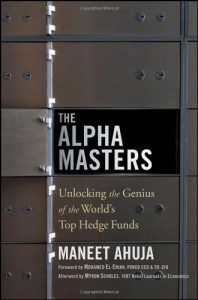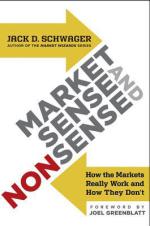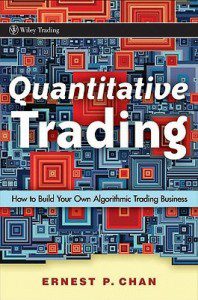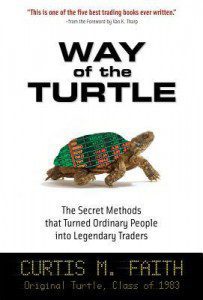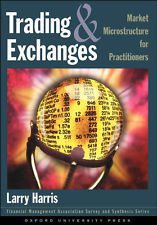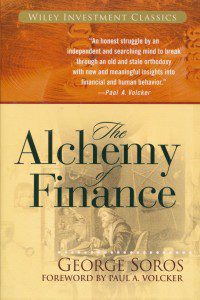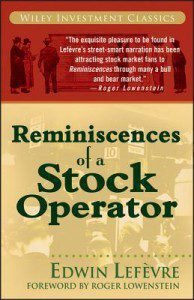In today’s instalment of our guide to the best hedge fund books and e-books, we take a look at some of the books that get down to the nitty-gritty of investing, from the classic 1923 book Reminiscences of a Stock Operator to a practical guide to building a quant-trading hedge fund.
The Alpha Masters: Unlocking the Genius of the World’s Top Hedge Funds
Maneet Ahuja (Wiley)
The Alpha Masters offers readers a behind-the-scenes look into the strategies and investment criteria that are used by the top money managers in order to determine their positions and maximise profits. It consists of a series of interviews with top traders chaired by the author and broadcaster Maneet Ahuja, CNBC’s hedge fund specialist and a producer on Squawk Box.
Among the stellar names that have given their time for the book are Bridgewater Associates’ Ray Dalio, John Paulson of Paulson & Co, Pierre LaGrange and Tim Wong of Man Group / AHL, David Tepper of Appaloosa Management William, A. Ackman of Pershing Square Capital Management and Third Point’s Daniel Loeb. This virtual ‘who’s who’ of the investment industry talk candidly and revealingly about their experiences, and the lessons they’ve learned, as a trader, providing many valuable insights into the psychology of successful hedge fund traders.
Market Sense and Nonsense: How the Markets Really Work (and How They Don’t)
Jack D. Schwager (Wiley)
As the author of the renowned ‘Market Wizards’ series of trader interview books, few writers can claim the breadth of insight and experience of former trader and fund manager Jack D. Schwager when it comes to how markets – and traders – work. One thing that shines through from this particular book is that most investment models and theories of how the markets work are in fact deeply flawed, and have more basis in convenience than in reality.
In this book, Schwager takes critical aim at some of the most pervasive misconceptions about the markets and money management, as well as the irrational tendencies of many traders. From the efficient markets theory to the strategy of buying in bull markets and selling in bear markets, he deconstructs a whole host of investing myths using a wealth of historical evidence and a healthy amount of common sense.
It’s not all about debunking market myths though, and Schwager does leaven his criticisms with plenty of real-world investment insight and guidance across a range of asset classes, drawing on his vast experience as well as those who he has interviewed in the past. There is priceless advice within on a range of basic and advanced investing topics, including hedge fund investing, investment timing, portfolio management, risk assessment, investment selection, and more besides. Whether you are a first-time investor or an experienced trader, the insights in this book could prove to be invaluable.
Quantitative Trading: How to Build Your Own Algorithmic Trading Business
Ernie Chan (Wiley)
Quantitative trading, also known as algorithmic or black-box trading, has been seeing remarkable growth in recent years, to the point where most of the trading volume in many of the major capital markets can now be attributed to automated trading robots. The institutional traders have been using and developing these techniques for a while now, but they are now filtering through into other spheres of investment, including independent trading.
In Quantitative Trading, Dr. Ernest Chan aims to show you how to employ these techniques to your advantage and start your own quantitative trading business, so whether you are a retail trader looking to make money with algo trades, an individual who wants to work as a quant at a major investment house, or just somebody who wants to learn more about this investing style, this book is an excellent primer.
Way of the Turtle: The Secret Methods that Turned Ordinary People into Legendary Traders
Curtis M. Faith (McGraw-Hill Professional)
At the tail end of the 1980s, trading guru Richard Dennis made a bet with his friend William Eckhardt about whether great traders were born or made. This turned into a legendary trading experiment in which 23 ordinary people (known as the “Turtles”) were taught how to become extraordinary traders in two weeks.
As the youngest of the Turtles (being only 19 at the time), Curtis Faith went on to be the most profitable by far, making over $30 million in four years. In this book, he blows the door open on the secrets of the Turtle selection process and the lucrative trading strategies that enabled them to make profits of more than $100 million, and an average return of 80% per year.
It’s not all about the strategies though, as they were all using the same ones, yet some were much more successful than others. The purpose of providing these strategies is to help you to develop related strategies that will work in any market, and help you to adopt a methodology for improving your trading approach through diversification and limiting your exposure to risk.
Trading and Exchanges: Market Microstructure for Practitioners
Larry Harris (Oxford University Press)
Some books about trading and investment are so engaging that they would be enjoyable to read even if you had no interest in finance. This book, however, is not one of them, and unless you have a decent knowledge of financial terminology and the markets in general, it may prove impenetrable.
Yet, while it may be heavy going at times, it does give a thorough explanation of what is an increasingly important topic for investors – namely market microstructure. It covers the people who trade securities and contracts, the markets they trade in, and the rules that govern them. From brokers and day traders to ECNs(electronic communication networks) and program trades, this book covers the full range of the components that make up the modern markets, and the tools and techniques that are used to trade them.
The Alchemy of Finance: Reading the Mind of the Market
George Soros
As one of the most successful – and famous – investors of all time, George Soros is considered to be one of the, if not the, leading voice on the topic of macroeconomics. In The Alchemy of Finance, he describes his unique view of the how the markets work in a clear – albeit somewhat dense – manner.
To illustrate his points, he looks at examples ranging from the rise and fall of REITs (real estate investment trusts) in the 1970s and the international debt crisis of the late 70s/early 80s. In addition to this, he also describes in some detail the way in which he translates his thinking about the markets into determining his trading activities. He rounds off the book with a look at how the markets evolved in the 1980s and early 90s, taking in topics such as systemic reform and the 1987 stock market crash. Although it isn’t exactly light reading, it is nonetheless essential for anyone who wants to learn more about macro investment strategies.
Reminiscences of a Stock Operator
Edwin Lefèvre (Wiley)
Considered by many to be the first great book about trading, Reminiscences of a Stock Operator is a thinly disguised biography written in 1923 of renowned trader Jesse Lauriston Livermore. Even to this day, it is considered essential reading by many of the biggest names in the investing industry, having been ranked 15th in Fortune’s 75 of the Smartest Books We Know, and described by former Federal Reserve chairman Alan Greenspan as “a font of investing wisdom.”
It tells the story of Livermore’s trading career, from starting out as a day trader in what were then called “New England Bucket Shops”, to making and losing his fortune several times over on Wall Street. The lessons he learns along the way are as relevant today as they were when the book was first published, and its many witty insights have made it one of the most oft-quoted books in the history of investment literature.
I am a writer based in London, specialising in finance, trading, investment, and forex. Aside from the articles and content I write for IntelligentHQ, I also write for euroinvestor.com, and I have also written educational trading and investment guides for various websites including tradingquarter.com. Before specialising in finance, I worked as a writer for various digital marketing firms, specialising in online SEO-friendly content. I grew up in Aberdeen, Scotland, and I have an MA in English Literature from the University of Glasgow and I am a lead musician in a band. You can find me on twitter @pmilne100.






























